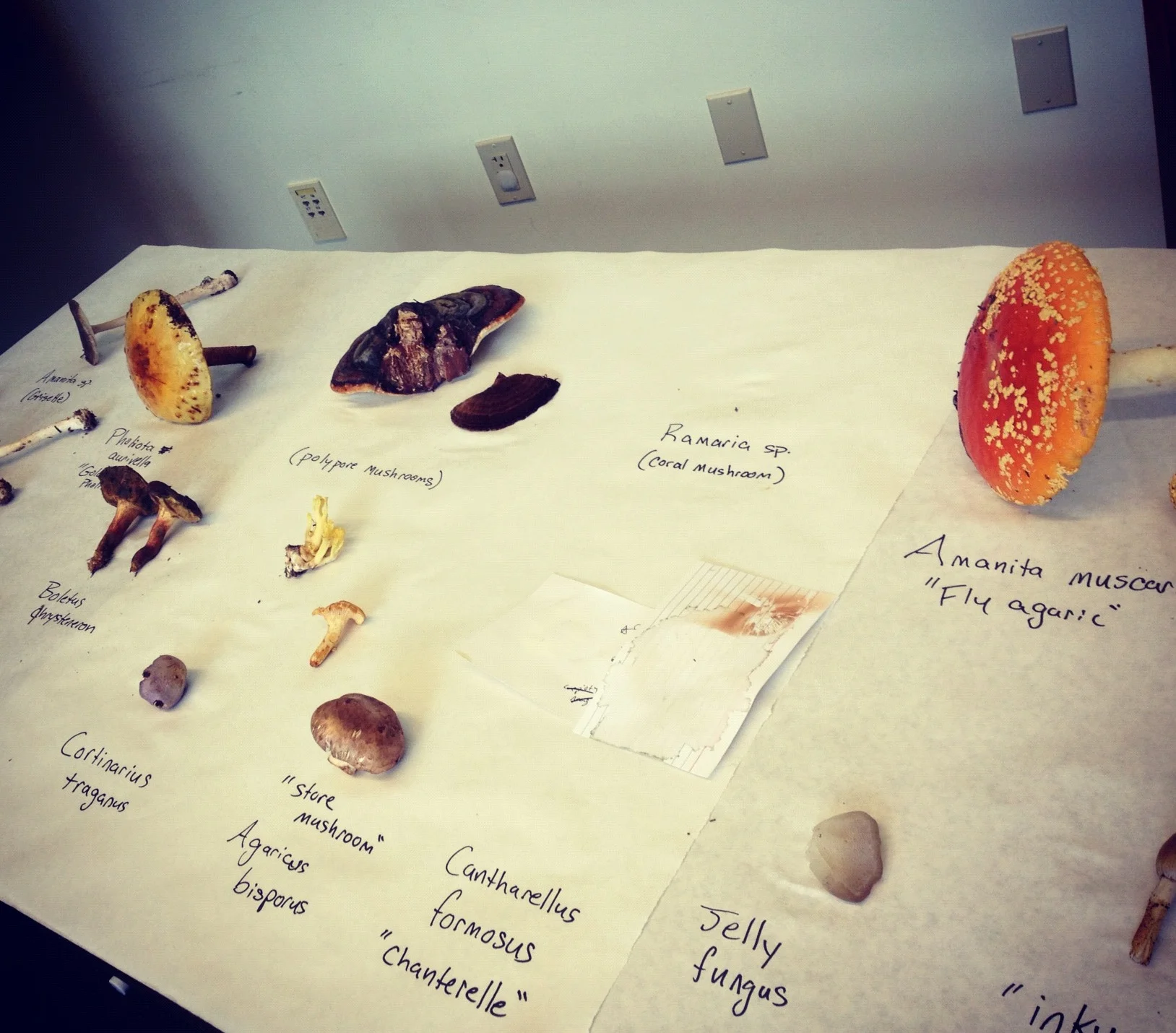

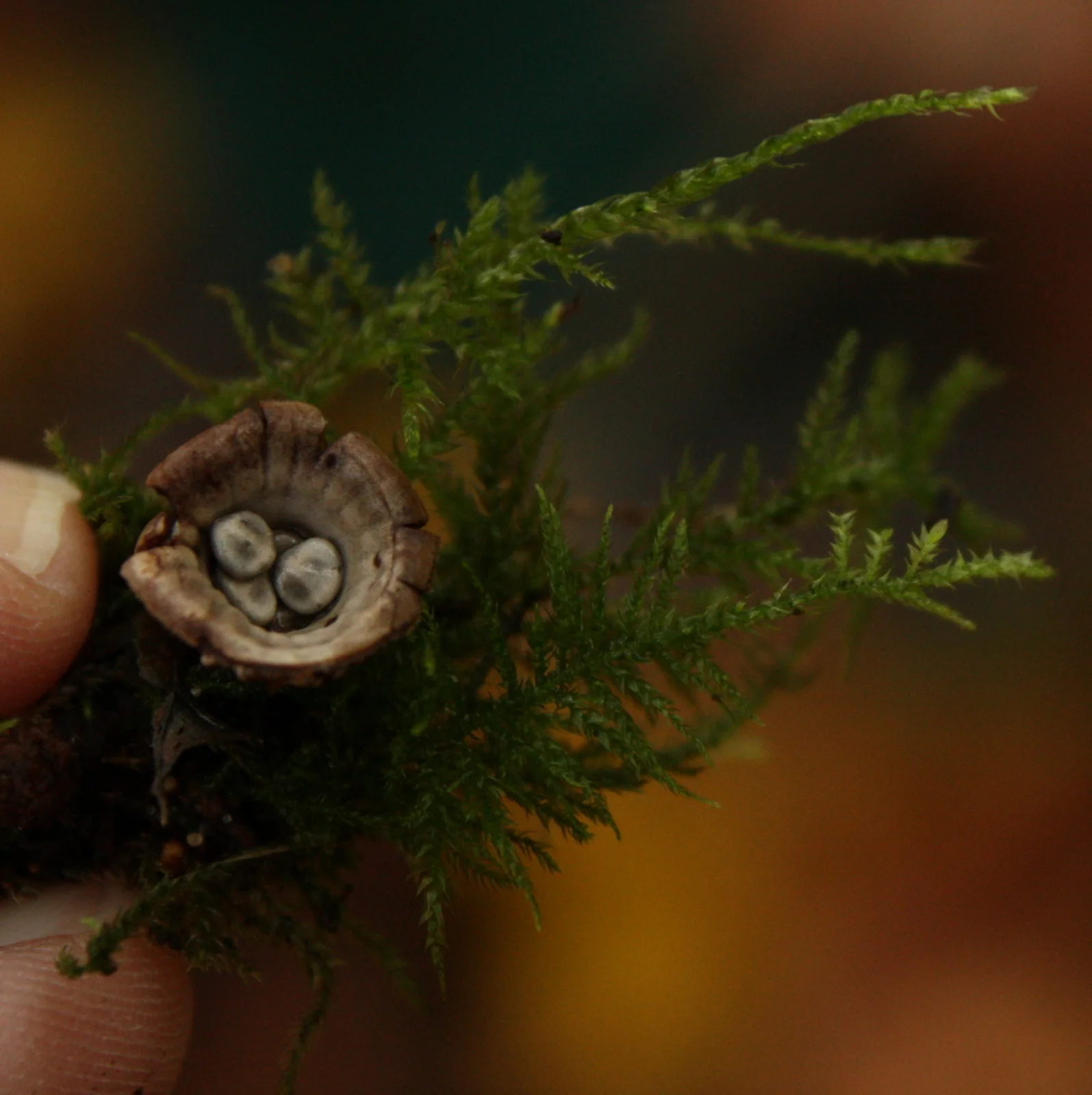
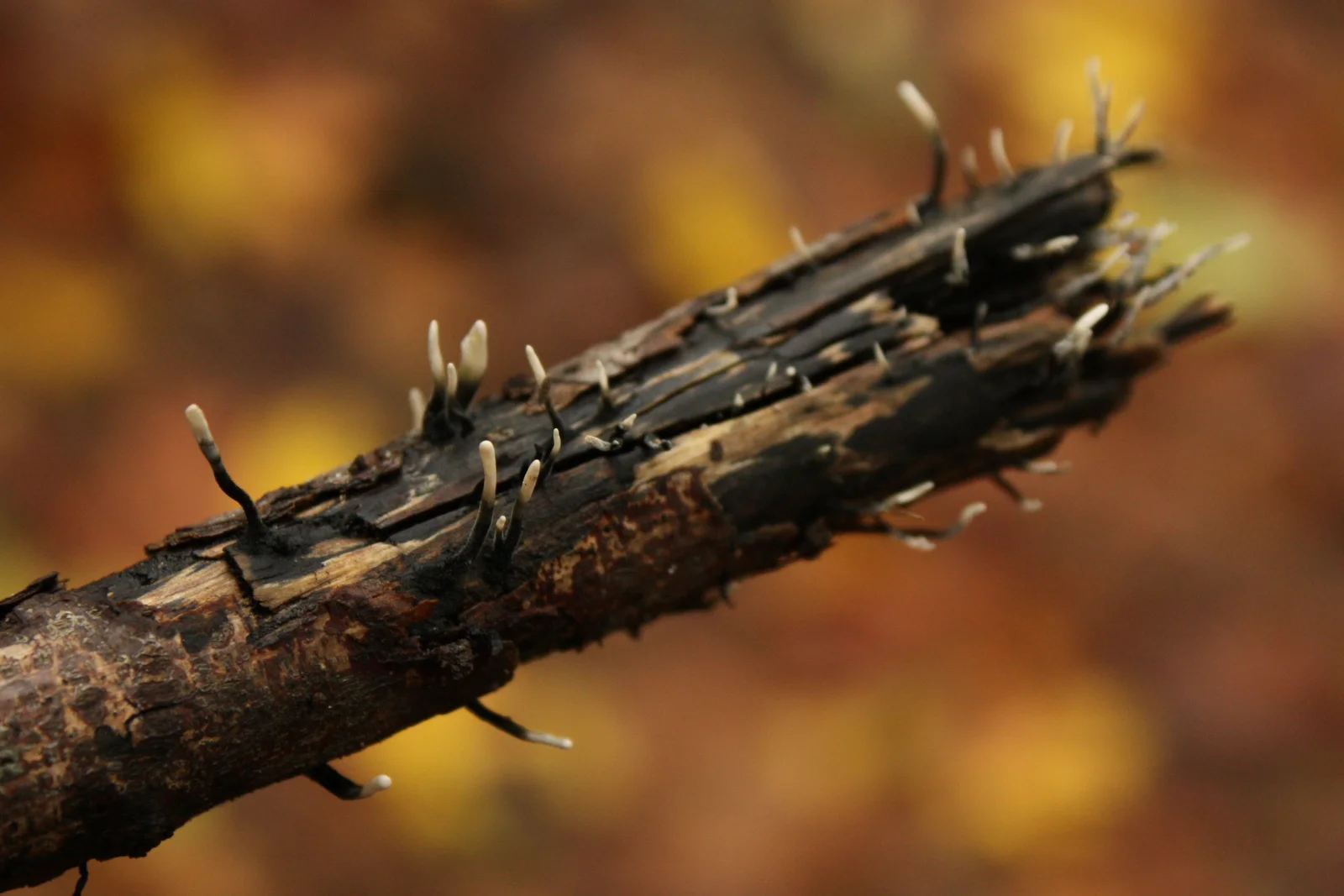
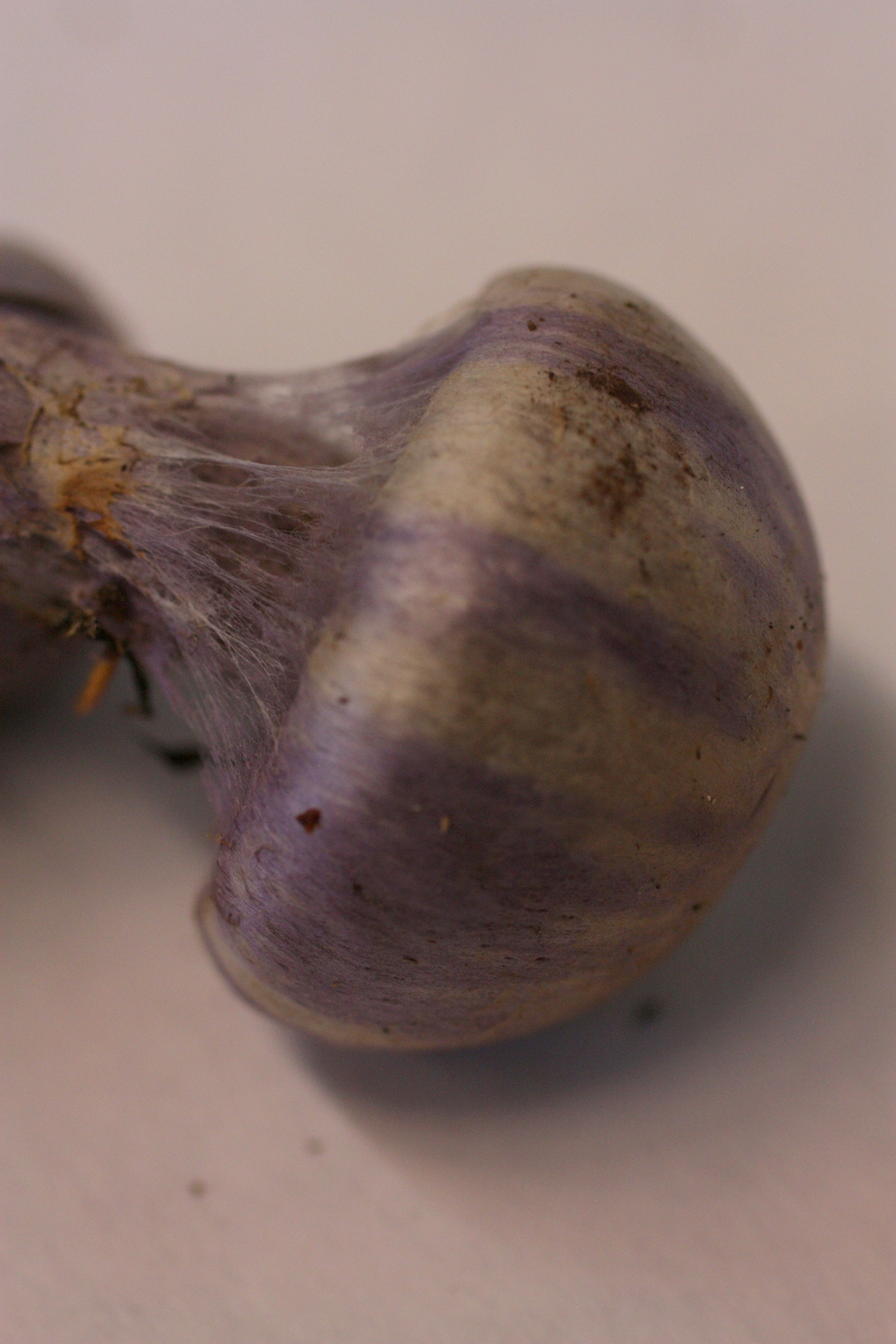

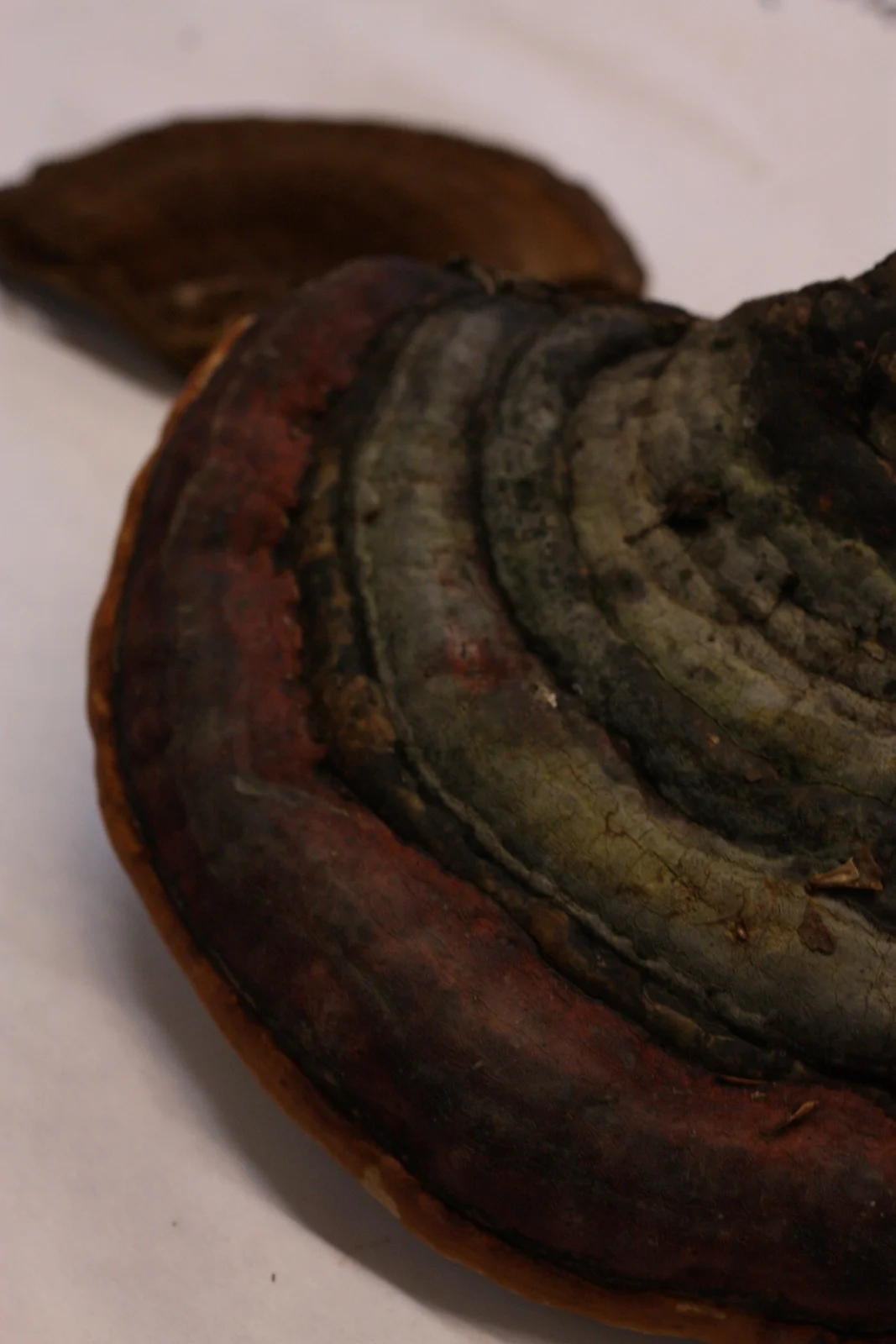

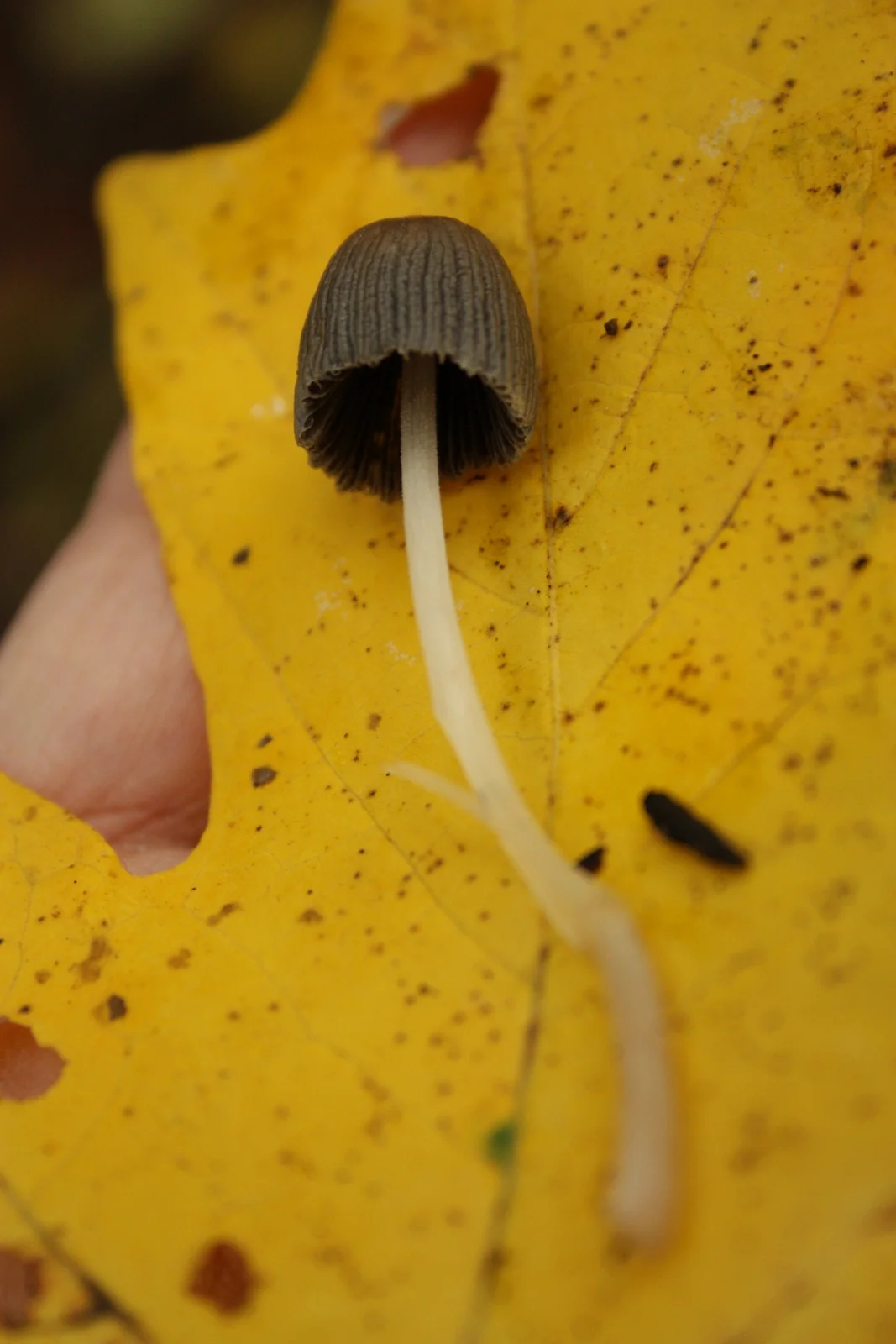
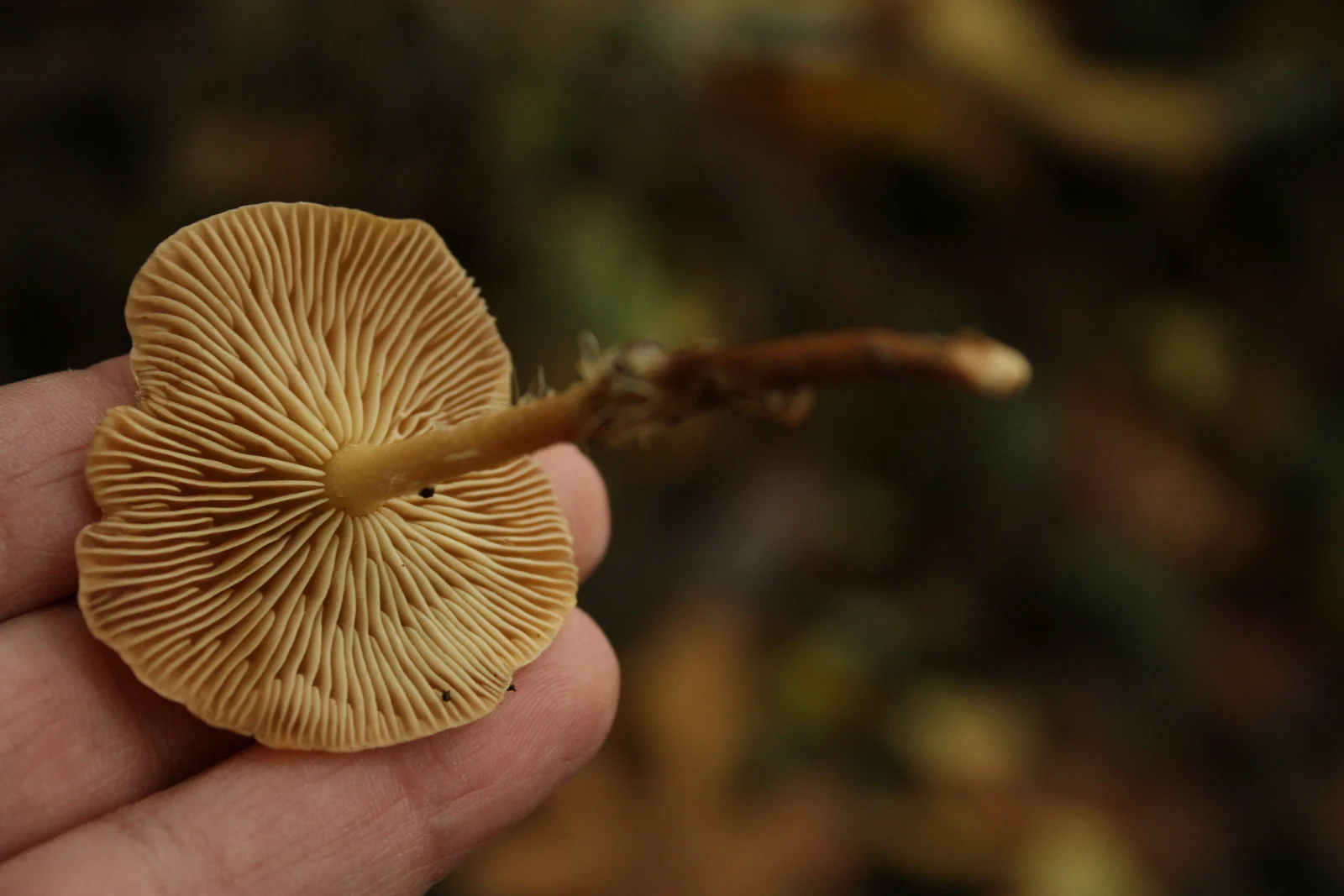

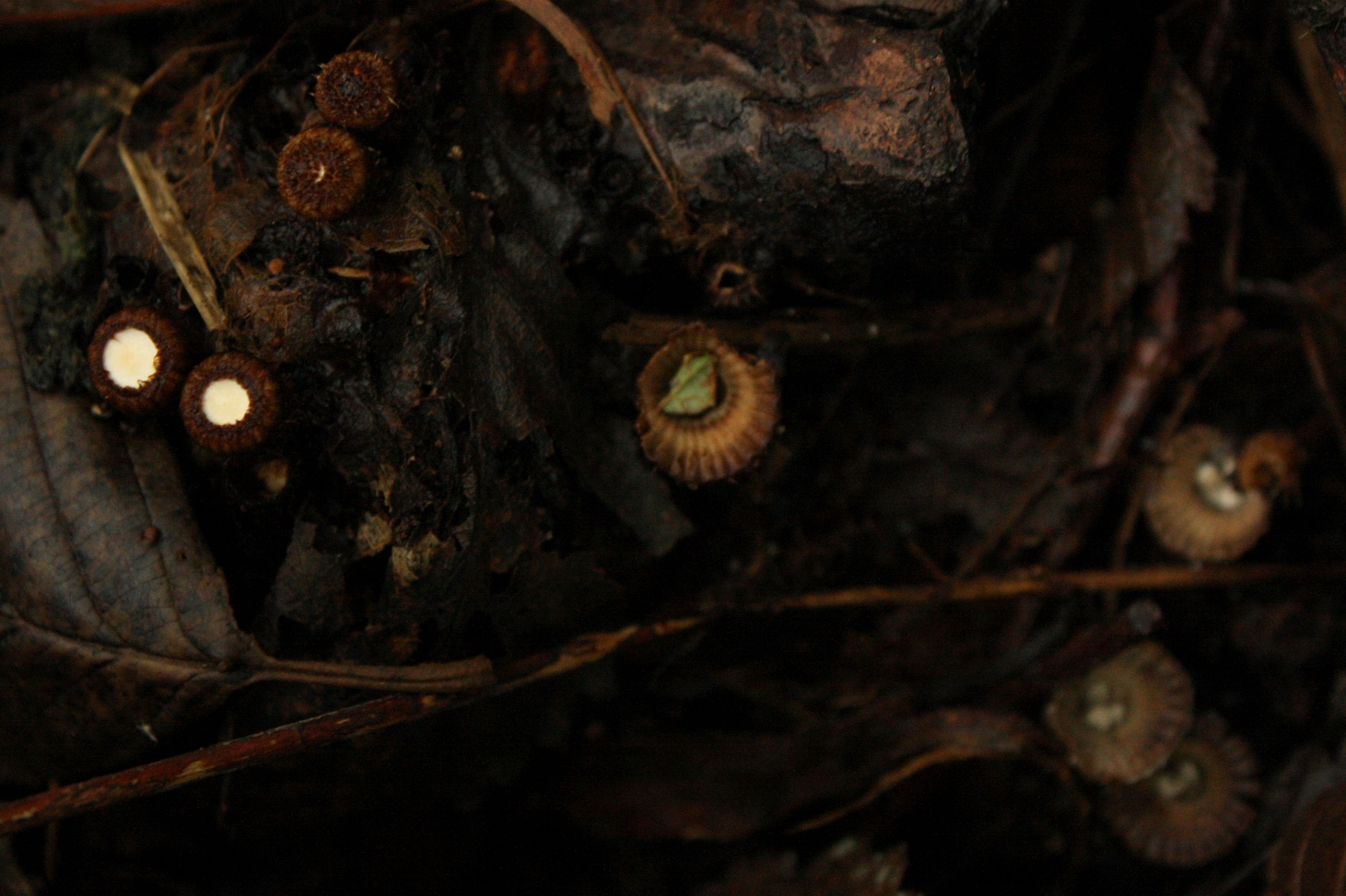
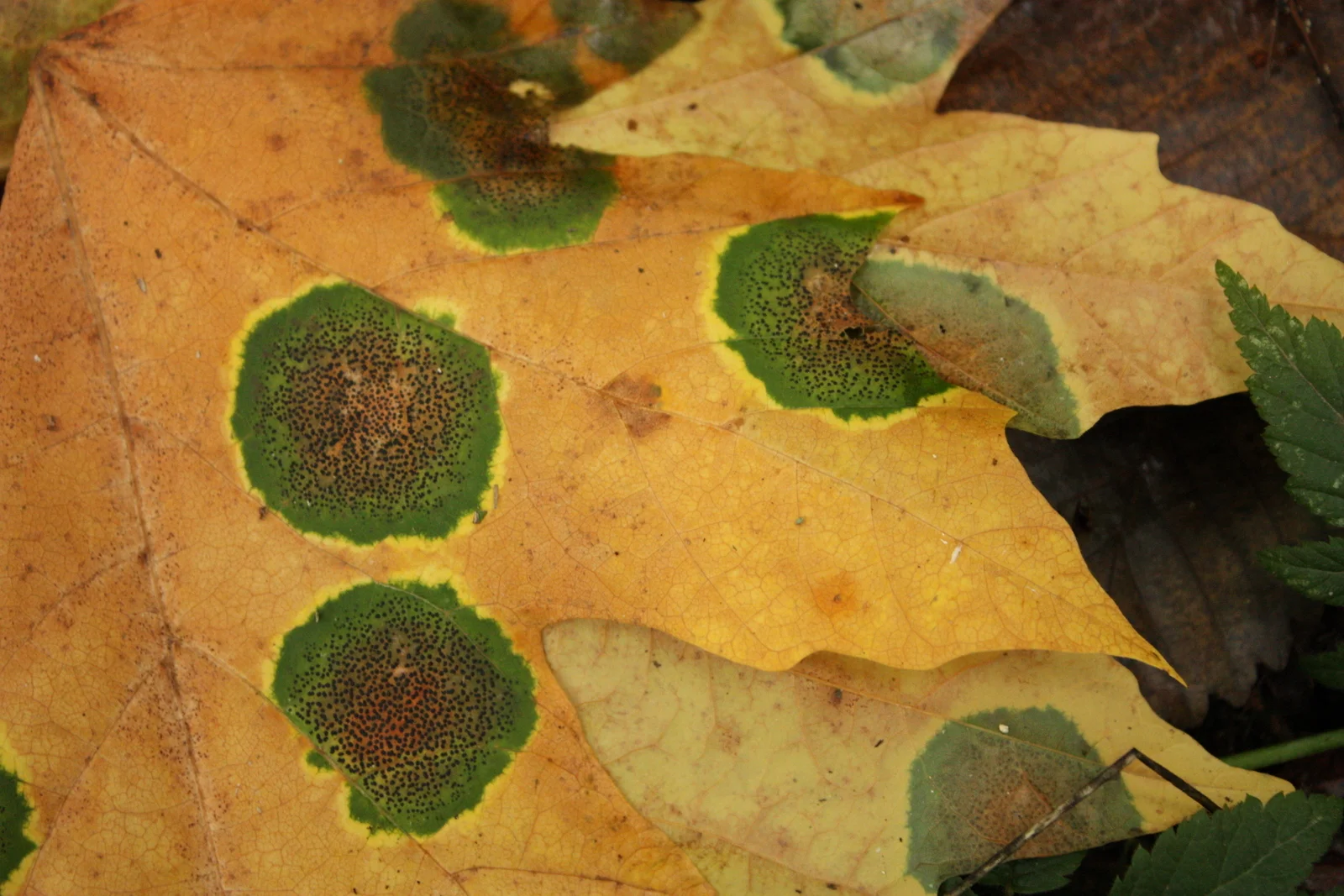

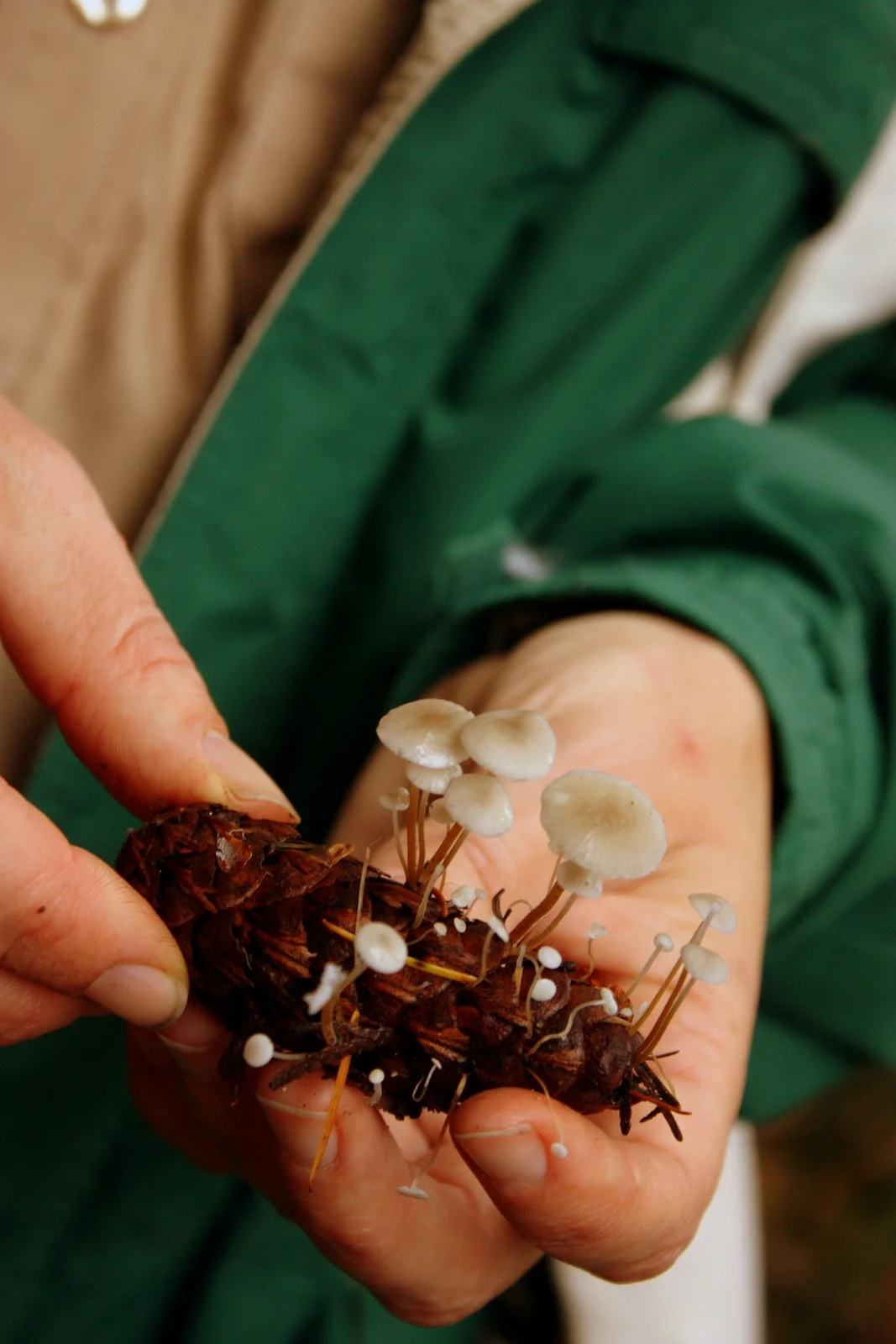


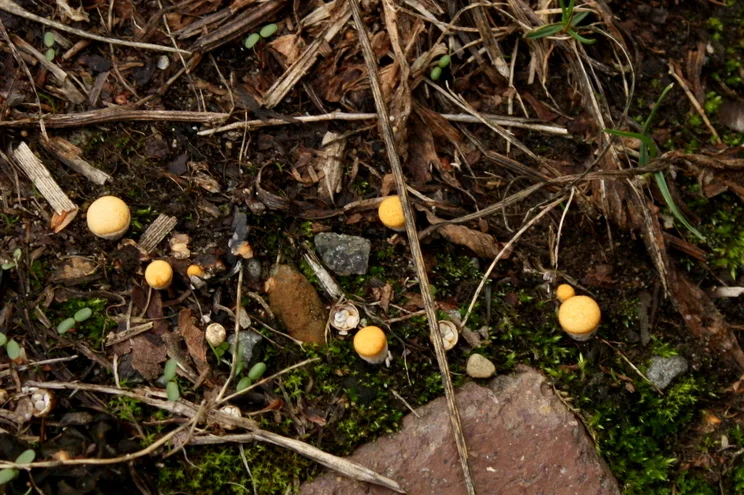
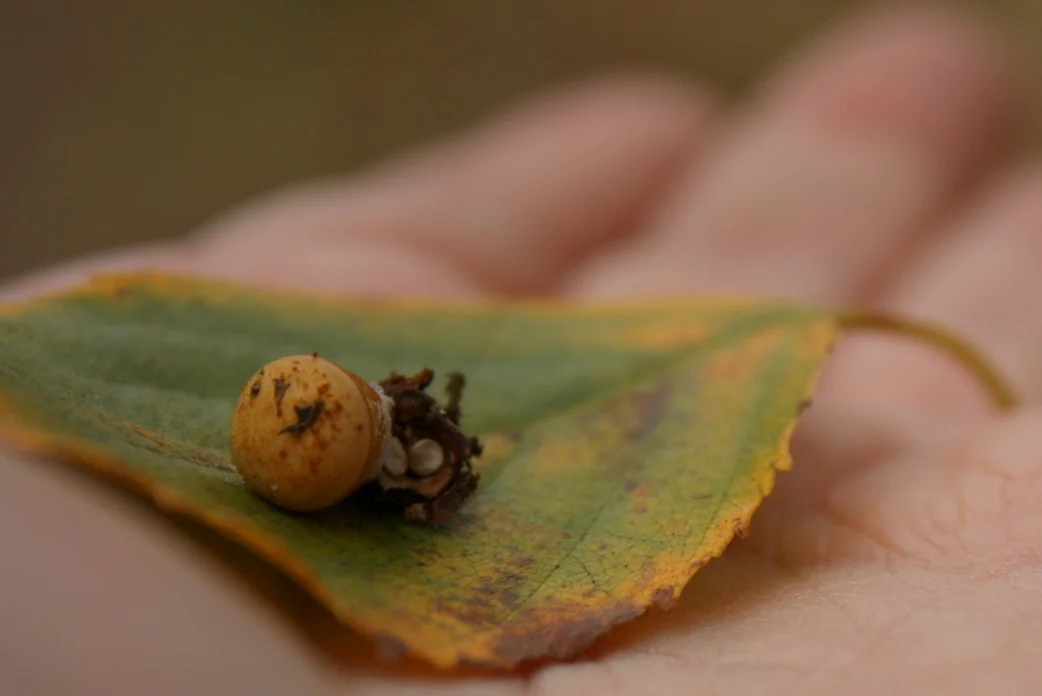

October 28, 2012: Seattle Parks Department offered a free mushroom walk at Discovery Park, led by volunteer docent and amateur mycologist Denise Rhiner. The event had to be postponed for a couple weeks due to the dry September and October we'd been having, and Denise had to bring in samples from outside the park as we weren't sure if there would be much yet fruiting within the park.

Fly agaric (Amanita muscaria). Poisonous (well, I'm considering it poisonous; some people eat it and they are welcome to my share) and hallucinogenic. Apparently an element of the hallucinations is distortions in size perceptions, which is why it's thought to be the basis for mushroom in Alice in Wonderland.

Bird's nest fungi. So named because, well, for how it looks. The "eggs" are little spore packets. When a drop of water falls into the "nest," it knocks out the packet, helping spread the spores.

Candlestick fungus (Xylaria hypoxylon). Per Wikipedia: "the candlesnuff fungus, carbon antlers, or the stag's horn fungus. The fruit bodies, characterized by erect, elongated black branches with whitened tips, typically grow in clusters on decaying hardwood. The fungus can cause a root rot in hawthorn and gooseberry plants." Inedible.

Cortinarius traganus. I think this might be my new favorite because a) its common name is "gassy webcap" and b) Wikipedia says it "smells very strongly and unpleasantly of goats." Where most mushrooms have a shredded, breaking veil, this one has veil like a spiderweb.

Mushrooms are called the "fruits of the fall" because, of course, they are the fruiting/reproductive body associated with the mycelia from which they grow. Here, the white fluffy mycelial mat is partially visible. It's the mycelium that absorbs nutrients and helps break down other vegetative matter.

Blown-up earth star mushroom. It was surprisingly hard, like a hard cookie. (For an intact earth star, see this photo from a 2009 mushroom walk in Bridle Trails State Park: http://www.flickr.com/photos/lacatholique/4063594860/in/set-72157622582508127)

Close-up of the bird's nest. As you can probably guess from the number of bird's nest featured in this album, they are my favorite. I just like mini versions of anything.